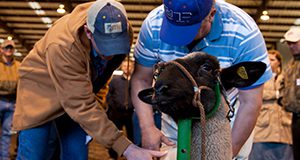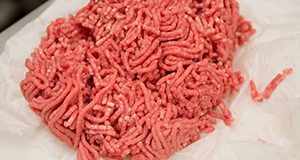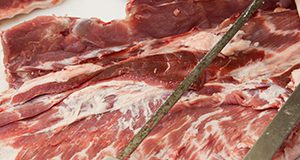This new poster includes all of the lamb and variety meat cuts, primals, and cooking methods that are included in the Florida 4-H Meat Judging Contest. This contest, coordinated by the Florida 4-H Animal Sciences program, develops life skills through activities related to the processing of beef, pork, and lamb, including retail identification, meat quality factors, and cooking methods. Written by Brian Estevez, Chad Carr, and Larry Eubanks, and published by the UF/IFAS 4-H Youth Development Department, December 2017.
http://edis.ifas.ufl.edu/4h381
Tag: Larry F. Eubanks
Beef Retail Identification Cuts
This new poster includes all of the beef cuts, primals, and cooking methods that are included in the Florida 4-H Meat Judging Contest. This contest, coordinated by the Florida 4-H Animal Sciences program, develops life skills through activities related to the processing of beef, pork, and lamb, including retail identification, meat quality factors, and cooking methods. Written by Brian Estevez, Chad Carr, and Larry Eubanks, and published by the UF/IFAS 4-H Youth Development Department, December 2017.
http://edis.ifas.ufl.edu/4h380
Pork Retail Identification Cuts
This new poster includes all of the pork cuts, primals, and cooking methods that are included in the Florida 4-H Meat Judging Contest. This contest, coordinated by the Florida 4-H Animal Sciences program, develops life skills through activities related to the processing of beef, pork, and lamb, including retail identification, meat quality factors, and cooking methods. Written by Brian Estevez, Chad Carr, and Larry Eubanks, and published by the UF/IFAS 4-H Youth Development Department, November 2017.
http://edis.ifas.ufl.edu/4h379
How Do I Legally Sell Meat from Alligators, Wild Game, or My Farmed Game or Birds in Florida?
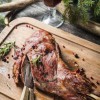 Game meats provide wholesome and nutritious animal protein, but learning the regulations (and which agency has jurisdiction over which regulations) can be burdensome for those who want to be entrepreneurial. This 4-page fact sheet is a “one-stop-shop” for Florida residents who want to sell products from alligators, wild game, or their own farmed game or birds. Written by Chad Carr, Jason Scheffler, Larry Eubanks, Ron Webb, Lee Cornman, Scotland Talley, and Steve Stiegler, and published by the UF Department of Animal Sciences, December 2014. (Photo: iStock/Thinkstock.com)
Game meats provide wholesome and nutritious animal protein, but learning the regulations (and which agency has jurisdiction over which regulations) can be burdensome for those who want to be entrepreneurial. This 4-page fact sheet is a “one-stop-shop” for Florida residents who want to sell products from alligators, wild game, or their own farmed game or birds. Written by Chad Carr, Jason Scheffler, Larry Eubanks, Ron Webb, Lee Cornman, Scotland Talley, and Steve Stiegler, and published by the UF Department of Animal Sciences, December 2014. (Photo: iStock/Thinkstock.com)
http://edis.ifas.ufl.edu/an315
How Do I Legally Sell Meat from My Own Livestock and Poultry in Florida?
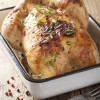 There is much interest in locally produced foods, but the federal, state, and local regulations can be confusing. This 5-page fact sheet is a “one-stop-shop” for Florida residents who want to sell meat from their own livestock and poultry. Written by Chad Carr, Jason Scheffler, Larry Eubanks, Ron Webb, Lee Cornman, Scotland Talley, and Steve Stiegler, and published by the UF Department of Animal Sciences, December 2014. (Photo: iStock/Thinkstock.com)
There is much interest in locally produced foods, but the federal, state, and local regulations can be confusing. This 5-page fact sheet is a “one-stop-shop” for Florida residents who want to sell meat from their own livestock and poultry. Written by Chad Carr, Jason Scheffler, Larry Eubanks, Ron Webb, Lee Cornman, Scotland Talley, and Steve Stiegler, and published by the UF Department of Animal Sciences, December 2014. (Photo: iStock/Thinkstock.com)
http://edis.ifas.ufl.edu/an316
Facts and Frequently Asked Questions About Lean, Finely-Textured Beef (AN281)
 Two very similar finely-textured beef products available commercially and produced from slightly different patented processes have received an increased amount of media attention recently, where they have been referred to as “pink slime.” This 4-page fact sheet is intended to answer some of the consumer questions that have arisen as a result of this increased attention. Written by Chad Carr, Dwain Johnson, Joel Brendemuhl, and Larry Eubanks, and published by the UF Department of Animal Science, July 2012.
Two very similar finely-textured beef products available commercially and produced from slightly different patented processes have received an increased amount of media attention recently, where they have been referred to as “pink slime.” This 4-page fact sheet is intended to answer some of the consumer questions that have arisen as a result of this increased attention. Written by Chad Carr, Dwain Johnson, Joel Brendemuhl, and Larry Eubanks, and published by the UF Department of Animal Science, July 2012.
http://edis.ifas.ufl.edu/an281
Specialty Meat Marketing Claims: What’s the Difference? (AN191)
American consumers are confused about the differences between meat products with special marketing claims (i.e., organic, natural, naturally raised, and grass-fed) and regular or commodity meat products. This 5-page report discusses these claims as defined by the USDA and addresses the differences between these products for food safety, human health, and eating quality.Written by Chad Carr, Larry Eubanks, and Ryan Dijkhuis and published by the UF Department of Animal Science, April 2011.
http://edis.ifas.ufl.edu/an191
AN248 Custom Exempt Red Meat and/or Poultry Slaughter Facilities in Florida
AN248, a 3-page illustrated fact sheet by Chad Carr and Larry Eubanks, discusses custom exempt slaughter facilities in Florida, and how these facilities differ from other meat processing facilities. Includes references. Published by the UF Department of Animal Science, July 2010.
http://edis.ifas.ufl.edu/an248
AN247 Summary of Alternative Cooling Procedures for Large Bone-In Hams
AN247, a 4-page fact sheet by Chad Carr and Larry Eubanks, discusses cooling requirements for heavier weight hams to avoid bacterial contamination. Includes references. Published by the UF Department of Animal Science, July 2010.
http://edis.ifas.ufl.edu/an247
AN222 Growth of Generic E. coli and Aerobic Bacteria on Beef Muscle held at 50°F for 8 Hours
AN222, a 4-page fact sheet by Larry Eubanks, Chad Carr, and Chris Pantaleo, presents the results of a study to determine the growth of generic E. coli and aerobic bacteria as indicators of pathogenic bacteria on beef muscle held at 50°F for eight hours. Includes references. Published by the UF Department of Animal Sciences, November 2009.
http://edis.ifas.ufl.edu/AN222
AN229 Fresh Meat Selection for Consumers
AN229, a 5-page illustrated fact sheet by Chad Carr, Ed Jennings, and Larry Eubanks, aims to provide consumers with a solid working knowledge of fresh meat terminology so that they can select meat cuts that will perform desirably in all recipes. Includes references. Published by the UF Department of Animal Science, October 2009.
http://edis.ifas.ufl.edu/AN229
AN221 Hazard Analysis Critical Control Points (HACCP) Principle 7: Establish Record Keeping and Documentation Procedures
AN221, a 4-page fact sheet by Larry Eubanks, Chad Carr, and Ronald H. Schmidt, describes the requirements for overall program and daily records as required under regulations for preventative accountability. Includes references. Published by the UF Department of Animal Sciences, August 2009.
http://edis.ifas.ufl.edu/AN221
AN221 Hazard Analysis Critical Control Points (HACCP) Principle 7: Establish Record Keeping and Documentation Procedures
AN221, a 4-page fact sheet by Larry Eubanks, Chad Carr, and Ronald H. Schmidt, describes how to establish proper recordkeeping as an imperative part of the HACCP system of preventative accountability. Includes references. Published by the UF Department of Animal Science, August 2009.
http://edis.ifas.ufl.edu/AN221
AN206 The Effects of Chilling Temperature of Bone-in Fully-Cooked Hams on Microbial Growth and Shelf Life
AN206, a 4-page fact sheet by C. Chad Carr and Larry Eubanks, reports the results of a study to determine the effect of not meeting the USDA’s suggested standard for chilling on the microbial growth and retail acceptability of bone-in, fully-cooked hams. Includes references. Published by the UF Department of Animal Science, October 2008.
http://edis.ifas.ufl.edu/AN206
AN-204/AN204 Custom and Retail Exempt Meat Processing
AN204, a 4-page fact sheet by Chad Carr, Larry Eubanks, and Ryan Dijkhuis, explains the exemptions for custom and retail exempt meat processors, and also covers Florida Sunshine Law
specific to meat processors. Published by the UF Department of Animal Science, September 2008.
http://edis.ifas.ufl.edu/AN204
AN203/AN203 USDA Inspected Livestock Slaughter Facilities in Florida
AN203, a 3-page ilustrated fact sheet by Chad Carr, Larry Eubanks, and Ryan Dijkhuis, provides a comprehensive list of USDA inspected meat animal slaughter facilities in Florida. Published by the UF Department of Animal Science, July 2008.
http://edis.ifas.ufl.edu/AN203
AN207/AN207 Country of Origin Labeling (COOL)
AN207, a 3-page fact sheet by Chad Carr and Larry Eubanks, describes the COOL labeling regulations for agricultural commodities, including the interim final rule released by AMS on July 28,2008. Includes references. Published by the UF Department of Animal Science, August 2008.
http://edis.ifas.ufl.edu/AN207
AN197/AN197 Adding Value to Livestock with Niche Meat Marketing Programs
AN197, a 6-page report by Chad Carr, Larry Eubanks, and Ryan Dijkhuis, discusses opportunities to add value to meat animals through existing specialty meat marketing programs. and addresses potential challenges to developing a niche meat marketing program. Includes references. Published by the UF Department of Animal Sciences, April 2008.
http://edis.ifas.ufl.edu/AN197
